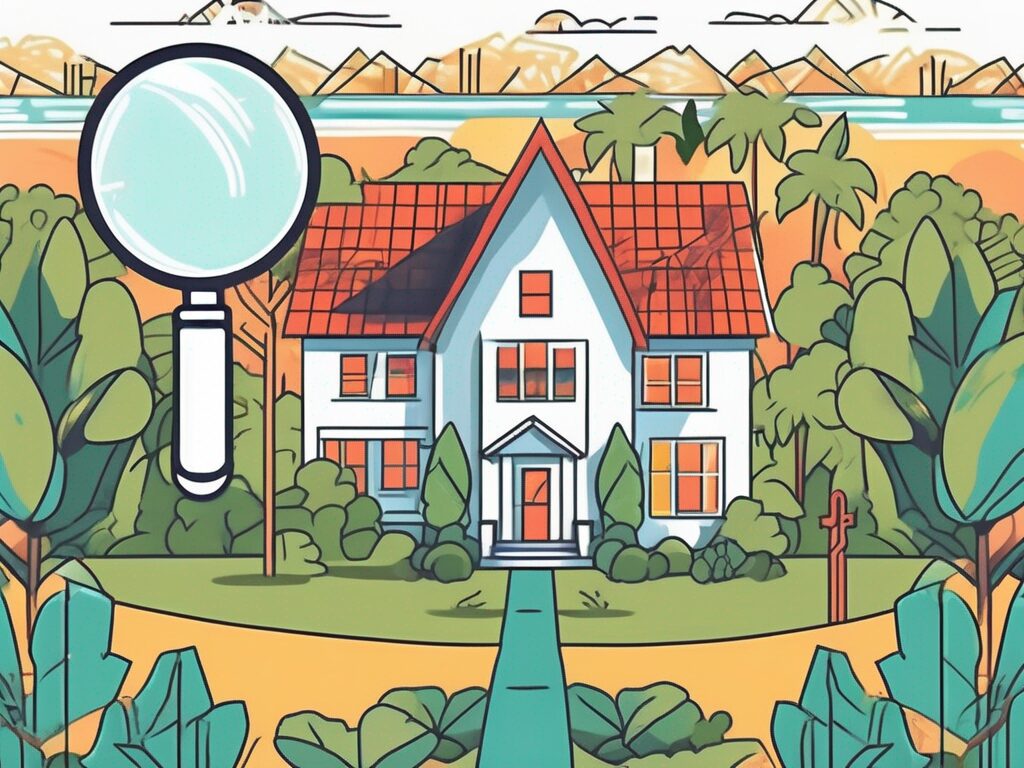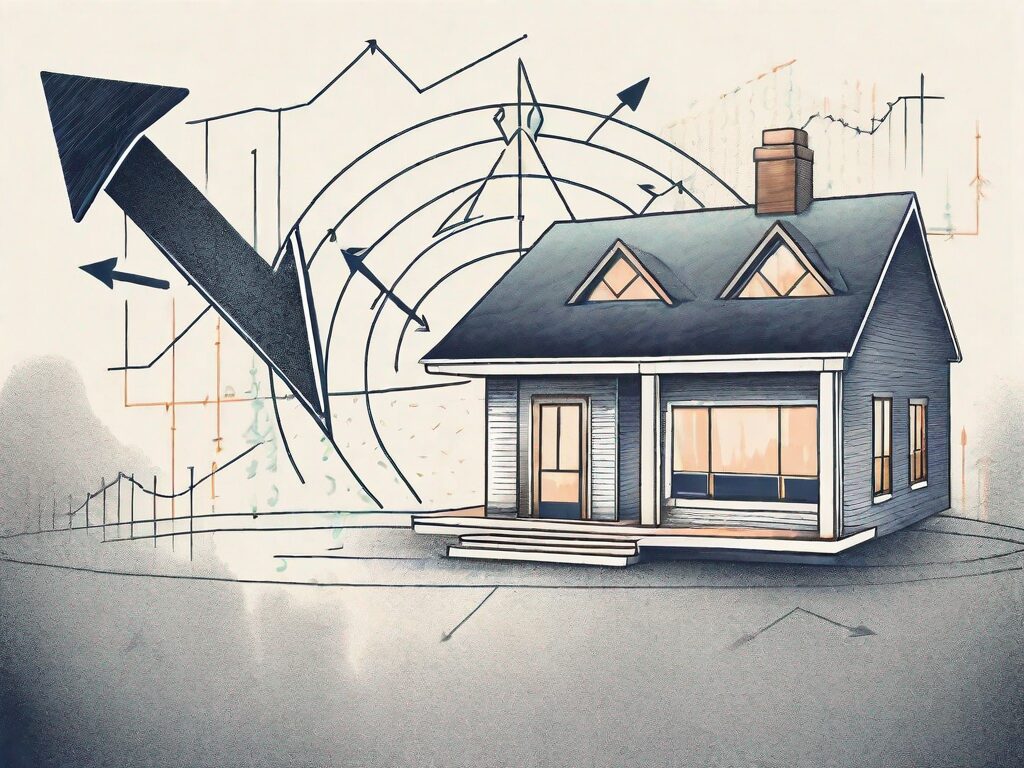
Agent A-Team or Solo Superhero? Finding the Right Real Estate Partner for Your Selling Journey in Wildwood Florida
When it comes to selling your home in Wildwood, Florida,…
January 29, 2024
No closing-cost mortgages have become increasingly popular among home buyers in recent years. This type of mortgage allows borrowers to avoid paying the upfront closing costs typically associated with purchasing a home. However, before deciding whether a no-closing-cost mortgage is right for you, it’s essential to understand the expenses involved in mortgage closing and the mechanics of this type of mortgage. Additionally, it’s crucial to weigh the pros and cons and consider alternative options. In this article, we will explore all these aspects to help you make an informed decision.
When closing a mortgage, there are several costs involved that buyers must pay upfront. These costs can range from application fees, origination fees, appraisal fees, title fees, and more. It’s vital to have a clear understanding of the breakdown of these costs before making any decisions.
Let’s take a closer look at the expenses you may encounter when closing on a mortgage:
Before diving into the details of a no-closing-cost mortgage, it’s crucial to understand the typical expenses encountered during the closing process. Let’s break down these costs:
Application fees are necessary to cover the administrative costs associated with reviewing and processing your mortgage application. These fees can vary depending on the lender, but they typically range from a few hundred to a thousand dollars. It’s important to factor in this cost when budgeting for your mortgage closing.
Origination fees are charged by the lender to cover the costs of processing and underwriting your mortgage loan. These fees are usually calculated as a percentage of the loan amount, typically ranging from 0.5% to 1% of the total loan value. For example, if you are borrowing $200,000, a 1% origination fee would amount to $2,000. It’s essential to consider this fee when evaluating different loan options.
Appraisal fees are necessary to determine the fair market value of the property you intend to purchase. Lenders require an appraisal to ensure that the property’s value aligns with the loan amount. These fees typically range from $300 to $500, depending on the size and location of the property. It’s important to note that even if the deal falls through, you will still be responsible for paying the appraisal fee.
Title fees are crucial for ensuring that the property you are purchasing has a clear and marketable title. These fees cover the cost of conducting a thorough title search to identify any potential issues or liens on the property. Additionally, title insurance is obtained to protect both the lender and the buyer from any unforeseen claims or disputes regarding the property’s ownership. Title fees can vary depending on the property’s value and location, but they typically range from $500 to $2,000.
In addition to the aforementioned costs, there are other closing fees that buyers should be aware of, such as escrow fees, attorney fees, recording fees, and prepaid expenses. These can vary based on factors such as location and lender policies. Communication with your lender and reviewing the Loan Estimate provided will help you understand what specific fees you can expect.
Escrow fees are paid to a third-party escrow company that handles the transfer of funds and documents between the buyer, seller, and lender. These fees typically range from $300 to $1,000, depending on the complexity of the transaction.
Attorney fees may be required in some states, especially if an attorney is needed to review the closing documents and ensure that all legal requirements are met. These fees can vary significantly, but they typically range from $500 to $2,000.
Recording fees are charged by the county or municipality to record the mortgage and other related documents in the public records. These fees are usually a flat rate per document and can range from $50 to $200.
Prepaid expenses include items such as property taxes, homeowner’s insurance, and prepaid interest. These expenses are typically prorated based on the closing date and can vary depending on the time of year and the specific terms of your loan.
It’s important to thoroughly review the Loan Estimate provided by your lender, as it will outline all the closing costs associated with your mortgage. This document will give you a detailed breakdown of each fee, allowing you to budget accordingly and avoid any surprises on closing day.
A no-closing-cost mortgage is designed to help home buyers avoid the burden of upfront fees. In these mortgages, the closing costs are instead rolled into the overall loan amount or offset by a slightly higher interest rate. Let’s delve into how this mechanism works.
When it comes to purchasing a home, closing costs can add up quickly. These costs typically include fees for appraisals, inspections, title searches, and other necessary services. For many buyers, these upfront expenses can be a significant financial hurdle. However, with a no-closing-cost mortgage, borrowers are not required to pay these costs out of pocket.
Instead, the closing costs are included in the overall mortgage balance. This means that the buyer does not have to come up with a large sum of money at the time of purchase. The costs are spread out over the life of the loan, making it more manageable for the borrower. However, it’s important to note that this does not mean the closing costs are waived. They are still paid, but in a different way.
With a no-closing-cost mortgage, borrowers can finance the closing costs by adding them to the loan amount. For example, if the closing costs amount to $5,000, the loan amount will be increased by that same amount. This means that the borrower will be responsible for repaying the closing costs over the term of the loan, along with the principal and interest.
While this may sound appealing, it’s essential to understand that financing the closing costs will result in a higher loan amount. This means that the borrower will be paying interest on a larger sum of money, which can increase the overall cost of the loan. It’s important for borrowers to carefully consider whether the benefits of avoiding upfront costs outweigh the potential long-term costs.
While avoiding upfront costs may seem like a significant advantage, it’s important to thoroughly evaluate the terms of a no-closing-cost mortgage. These mortgages typically come with certain limitations or trade-offs, which vary from lender to lender.
One common trade-off is a slightly higher interest rate. Lenders may offer a no-closing-cost mortgage by offsetting the closing costs with a higher interest rate. This means that the borrower will pay a slightly higher rate over the life of the loan, which can result in higher monthly payments and a larger overall cost.
Additionally, borrowers may have limited flexibility in negotiating other loan terms. Lenders may be less willing to offer certain concessions or adjustments when the closing costs are rolled into the loan amount. This can limit the borrower’s ability to customize the loan to their specific needs or financial situation.
It’s important for borrowers to carefully weigh the pros and cons of a no-closing-cost mortgage before making a decision. While it can provide short-term financial relief by eliminating upfront costs, it’s crucial to consider the long-term implications and costs associated with financing the closing costs over the life of the loan.
Before deciding whether a no-closing-cost mortgage is the right choice for you, it’s essential to weigh the advantages and disadvantages.
When it comes to purchasing a home, one of the biggest financial considerations is the upfront costs associated with closing. These costs can include fees for the loan origination, appraisal, title search, and other services. However, with a no-closing-cost mortgage, buyers have the option to avoid paying these fees upfront, which can be particularly appealing, especially for first-time home buyers who are already stretched when it comes to their down payment.
One significant benefit of a no-closing-cost mortgage is the ability to preserve cash upfront. By not having to pay the closing costs out of pocket, buyers can keep their savings intact or allocate those funds towards other important expenses. This can be especially beneficial for those who are looking to purchase a higher-priced home or who want to reserve additional funds for home improvements or unforeseen expenses that may arise after the purchase.
However, it’s important to consider the potential drawbacks of opting for a no-closing-cost mortgage. One of the main drawbacks is the higher interest rate associated with these types of loans. Lenders typically compensate for waiving the closing costs by charging a slightly higher interest rate. While this may not seem significant at first, it can result in higher monthly mortgage payments and a larger total interest paid over the life of the loan.
Borrowers must carefully consider the long-term implications and compare the savings in upfront costs to the additional interest paid. It’s crucial to evaluate how long you plan to stay in the home and whether preserving upfront cash is a high priority for you. If you plan to sell or refinance the property in a few years, the higher interest rate may not have a significant impact. However, if you plan to stay in the home for a longer period, the cumulative effect of the higher interest rate can add up over time.
Ultimately, deciding whether a no-closing-cost mortgage is right for you depends on your individual financial situation and long-term goals. It’s important to carefully assess your current financial position, consider your future plans, and evaluate the potential costs and benefits. Consulting with a mortgage professional who can guide you through the decision-making process is also crucial. They can provide you with personalized advice based on your specific circumstances and help you make an informed choice.
Securing a no-closing-cost mortgage involves navigating a specific process. Let’s explore the steps and considerations involved.
When it comes to purchasing a home, one of the biggest hurdles for many buyers is the closing costs. These costs can include fees for appraisals, inspections, title searches, and more. However, there is an alternative option that can help alleviate some of these financial burdens – a no-closing-cost mortgage.
A no-closing-cost mortgage is a type of loan where the borrower doesn’t have to pay the upfront closing costs typically associated with a mortgage. Instead, these costs are either rolled into the loan amount or paid by the lender in exchange for a slightly higher interest rate.
The first step is to research and compare lenders who offer no-closing-cost mortgages. It’s essential to find reputable lenders who have experience with this type of loan and can provide you with the best terms and conditions.
Once you’ve identified potential lenders, reach out to them to discuss your specific circumstances. It’s important to provide accurate information about your financial situation and clarify any questions or concerns you may have. This initial conversation will help you determine if a no-closing-cost mortgage is the right option for you.
If you decide to move forward, the lender will guide you through the application process. They will ask for documentation such as pay stubs, bank statements, and tax returns to verify your income and assets. It’s crucial to have all these documents ready to expedite the process.
After reviewing your application, the lender will provide you with a Loan Estimate. This document will detail the loan terms, including the interest rate, loan amount, and any associated costs. Take the time to carefully review the Loan Estimate and ask any questions you may have before proceeding.
If you’re satisfied with the terms and conditions outlined in the Loan Estimate, you can move forward with the loan application. The lender will initiate the underwriting process, where they will assess your creditworthiness, debt-to-income ratio, and other factors to determine your eligibility.
During the underwriting process, the lender may request additional documentation or clarification on certain aspects of your application. It’s important to promptly provide any requested information to avoid delays in the approval process.
Qualifying for a no-closing-cost mortgage follows a similar process to traditional mortgages. Your lender will assess your creditworthiness, debt-to-income ratio, and other factors to determine your eligibility.
To increase your chances of approval, it is crucial to have a well-established credit history. This means paying your bills on time, keeping your credit card balances low, and avoiding any negative marks on your credit report.
Additionally, having a stable source of income is essential. Lenders want to ensure that you have the financial means to make your mortgage payments on time. Providing proof of employment, such as pay stubs or tax returns, can help demonstrate your income stability.
Lastly, it’s important to carefully consider your budget and determine how much you can comfortably afford to borrow. While a no-closing-cost mortgage can help reduce upfront expenses, it’s still crucial to ensure that the monthly mortgage payments fit within your financial capabilities.
By following these steps and considering these tips, you can navigate the process of obtaining a no-closing-cost mortgage with confidence. Remember to do your research, ask questions, and work closely with your lender to find the best solution for your home financing needs.
While a no-closing-cost mortgage may seem like an attractive option, it’s worth exploring alternative approaches to minimize closing costs.
One alternative is to negotiate closing costs with the lender. It’s worth discussing the possibility of reducing or eliminating certain fees. Additionally, some assistance programs may be available that provide financial aid specifically for closing costs.
When considering a no-closing-cost mortgage, it’s crucial to carefully assess your individual circumstances and compare the various options available. Consult with a mortgage professional who can guide you through the decision-making process and help you determine the best choice for your specific needs.
Ultimately, the value of a no-closing-cost mortgage depends on your unique situation and priorities.
For some buyers, the convenience of preserving upfront cash may outweigh the potential drawbacks such as higher interest payments. However, it’s essential to conduct a thorough cost-benefit analysis and consider both the short-term and long-term financial implications.
In conclusion, no-closing-cost mortgages can offer a way to avoid the upfront expenses associated with purchasing a home. However, it’s crucial to fully understand the mechanics, weigh the pros and cons, and consider alternative options. By doing so, you can make an informed decision that aligns with your long-term financial goals.

If you want the Richr team to help you save thousands on your home just book a call.
 Book a call
Book a call